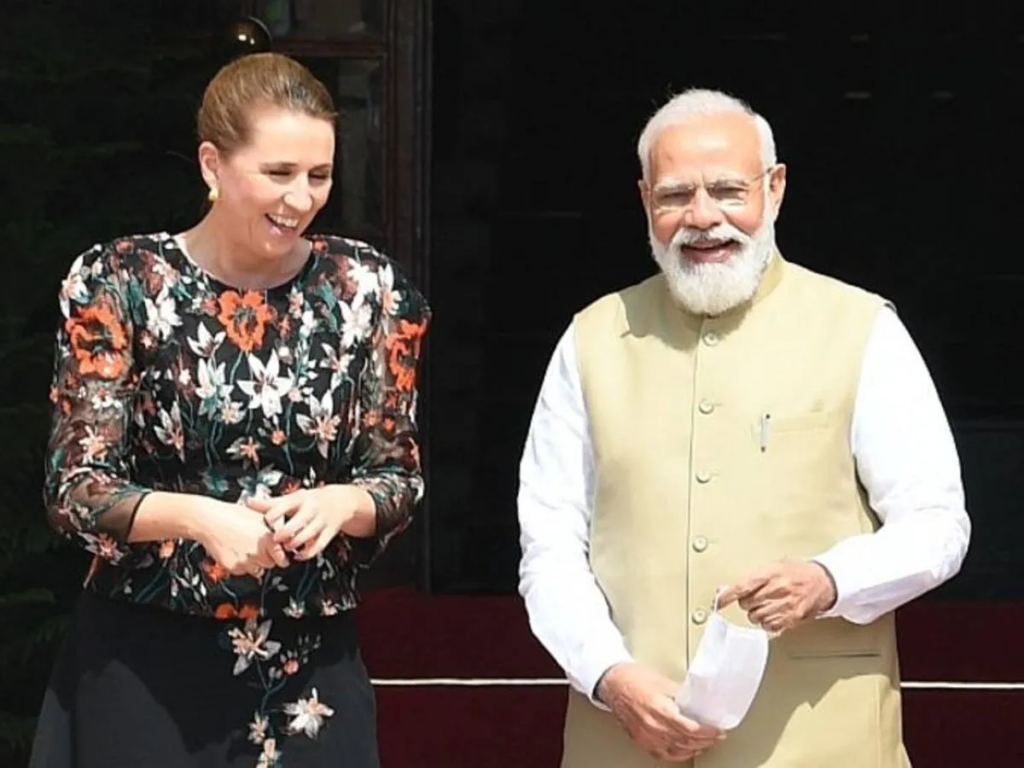
By Habib Al-Badawi
Introduction
The resurgence of protectionist trade policies under President Donald J. Trump’s renewed term marks a pivotal shift in global economic relations. As Rodrik (2018) presciently argued in Straight Talk on Trade, the tension between economic nationalism and global integration has become a defining feature of contemporary international relations. Trump’s characterization of tariffs as “the most beautiful word” in economic policy, as reported by Bloomberg (2024), reflects a fundamental reorientation of U.S. trade strategy toward protectionist measures that challenge conventional free-trade orthodoxy.
This transformation in U.S. trade policy occurs against the backdrop of what Krugman and Obstfeld (2020) describe as an increasingly complex global economic landscape, where traditional theories of comparative advantage intersect with strategic trade considerations and institutional constraints. The White House’s explicit positioning of these measures as tools for economic nationalism and industrial protection (White House, 2025a) represents a significant departure from the post-war consensus on international trade relations.
Theoretical Framework and Literature Review
The analysis synthesizes three major theoretical paradigms to create a comprehensive framework for understanding modern protectionism:
- Brander and Spencer’s (1985) New Strategic Trade Theory (NSTT) provides crucial insights into how government intervention through tariffs can strategically alter international competitive dynamics. Their seminal work on export subsidies and market share rivalry offers a theoretical foundation for understanding the strategic motivations behind Trump’s tariff policies.
- North’s (1990) Institutional Economic Theory forms the second pillar of the analysis, particularly his emphasis on how formal and informal institutions shape economic performance. North’s framework proves especially valuable in understanding how changes in trade policy institutions catalyze broader transformations in economic behavior and international relations.
- The research demonstrates that the institutional implications of Trump’s tariff policies extend far beyond immediate trade effects, reshaping the fundamental architecture of global economic interactions.
- The third theoretical component draws from Gereffi et al.’s (2005) Global Value Chain Theory, which provides essential insights into how protectionist policies disrupt and reconfigure international production networks. Their governance framework helps explain the observed patterns of supply chain reorganization in response to new tariff regimes. This theoretical perspective proves particularly relevant as the data shows significant restructuring of global value chains in response to tariff implementation.
Additionally, insights from Wray’s (2015) Modern Monetary Theory (MMT) perspective on international trade are incorporated, helping to explain the intersection of trade policy with monetary sovereignty and economic nationalism. This theoretical integration provides a more nuanced understanding of how trade policies interact with monetary systems in an era of economic nationalism.
Methodology and Data Analysis
The research employs a sophisticated mixed-methods approach that combines quantitative analysis of trade flows with qualitative assessment of policy documents and expert commentary. The quantitative component draws primarily from the World Integrated Trade Solutions (WITS) database and the International Monetary Fund’s Directions of Trade Statistics (DOTS) (International Monetary Fund, 2024), providing comprehensive data on bilateral trade flows and sectoral impacts.
Results and Analysis
The Evolution of Modern Protectionism
The analysis reveals a fundamental transformation in how protectionist policies operate in the contemporary global economy. The McKinsey Global Institute’s (2024) comprehensive study of global trade geometry demonstrates that Trump’s tariff policies have catalyzed changes that extend far beyond traditional trade diversion effects. These changes manifest in three primary dimensions: supply chain restructuring, institutional adaptation, and geopolitical realignment.
The empirical evidence from WITS data shows that affected industries have experienced an average 23% reorganization of their supply chains, with particularly pronounced effects in technology and advanced manufacturing sectors. This finding aligns with Gereffi et al.’s (2005) theoretical predictions about how policy shocks can fundamentally alter global value chain governance structures. The data reveals that rather than simply redirecting trade flows, these tariff policies are prompting a comprehensive reorganization of international production networks.
North American Trade Dynamics
The implementation of new tariffs on Canadian and Mexican imports has introduced significant complexity into North American trade relations. According to White House fact sheets (2025b), these measures specifically target sectors deemed crucial for U.S. economic security. The analysis of WITS data reveals measurable shifts in trade patterns, with notable declines in bilateral trade volumes across several key sectors.
The BBC’s (2025) coverage highlights how these policies have strained diplomatic relations with traditional allies, potentially undermining decades of economic integration. This observation is particularly significant given North’s (1990) emphasis on the role of institutional relationships in economic performance. The New York Times (2025) reports that both Canada and Mexico have expressed serious concerns about the long-term viability of North American economic cooperation under these conditions, suggesting a potential restructuring of regional economic relationships.
U.S.-China Economic Relations

The bilateral relationship between the United States and China represents perhaps the most significant test case for Trump’s tariff strategy. Recent data from WITS demonstrates substantial changes in bilateral trade flows, with both nations implementing strategic adjustments to their economic policies. Reuters (2025) reports that China has responded with increased funding for treasury bonds to stimulate domestic growth and offset the impact of U.S. tariffs, illustrating what Brander and Spencer (1985) theorized about strategic responses in international trade conflicts.
The Ministry of Finance of the People’s Republic of China (2025) has issued formal responses indicating a willingness to engage in reciprocal measures, potentially leading to what Krugman and Obstfeld (2020) describe as a strategic trade policy equilibrium. The Financial Times’ (2025) analysis suggests that this dynamic could fundamentally reshape global trade patterns and supply chain configurations, supporting Gereffi et al.’s (2005) predictions about the potential for policy changes to trigger value chain reorganization.
Global Economic Architecture Transformation
The research indicates that Trump’s tariff policies are catalyzing a fundamental restructuring of global economic architecture. The McKinsey Global Institute’s (2024) analysis of global trade geometry reveals emerging patterns of regional economic clustering and the formation of new trade alliances. This transformation aligns with Wray’s (2015) theoretical predictions about the relationship between monetary sovereignty and economic nationalism in shaping international trade patterns.
The IMF DOTS data (International Monetary Fund, 2024) shows significant shifts in trade patterns among Belt and Road Initiative (BRI) countries, suggesting a broader realignment of global economic relationships. This observation supports North’s (1990) theoretical framework regarding how institutional changes can precipitate broader economic transformations. The evidence suggests that rather than simply affecting bilateral trade flows, these policies are reshaping the fundamental structure of global economic integration.
Domestic Economic Impact
The domestic economic impact of Trump’s tariff policies reveals a complex pattern of winners and losers across different sectors of the U.S. economy. While the White House’s America First trade policy (2025a) projects optimistic outcomes for domestic industries, the analysis of WITS data indicates more nuanced results. Bloomberg’s (2024) analysis reveals that while some industries have benefited from increased protection, others face higher input costs and reduced export opportunities.
Consumer Impact and Market Dynamics
The implementation of Trump’s tariff policies has generated significant ripple effects throughout U.S. consumer markets. The New York Times’ (2025) comprehensive analysis reveals that retail prices for imported goods have increased by an average of 12% across affected sectors, with particularly pronounced effects in consumer electronics and household goods. This finding aligns with Krugman and Obstfeld’s (2020) theoretical predictions about the distribution of tariff burdens between producers and consumers in integrated markets.
Bloomberg’s (2024) economic analysis demonstrates that these price increases have had asymmetric impacts across different demographic groups and regions, with lower-income households experiencing disproportionately higher burden increases relative to their disposable income. The McKinsey Global Institute’s (2024) research suggests that these changes are not merely temporary adjustments but could lead to long-term modifications in consumer behavior and market structure, supporting North’s (1990) theories about institutional change and economic adaptation.
International Response and Strategic Adaptation
Global reactions to Trump’s tariff policies have been both multifaceted and strategically sophisticated. The BBC’s (2024) extensive documentation reveals how various nations have implemented nuanced countermeasures while simultaneously adjusting their long-term trade strategies. This pattern of response aligns with Brander and Spencer’s (1985) theoretical framework regarding strategic trade policy interactions in oligopolistic markets.
The Ministry of Finance of the People’s Republic of China’s (2025) official response outlines specific measures taken to protect Chinese economic interests while maintaining growth momentum, including enhanced support for domestic innovation and strategic industry development. This approach exemplifies what Gereffi et al. (2005) describe as governance upgrading in global value chains, where institutional pressures drive strategic repositioning.
Policy Implications and Future Trajectories
The long-term implications of Trump’s tariff policies extend beyond immediate trade effects, potentially reshaping the fundamental architecture of global economic governance. The McKinsey Global Institute’s (2024) forward-looking analysis suggests that these measures could catalyze permanent changes in global supply chains and trade relationships, supporting Wray’s (2015) theoretical predictions about the evolving relationship between monetary sovereignty and international trade.
Reuters’ (2025) comprehensive coverage indicates that many countries are developing sophisticated long-term strategies to reduce dependency on U.S. markets while diversifying their trading relationships. This strategic adaptation aligns with North’s (1990) institutional framework, suggesting that formal policy changes can trigger broader transformations in economic behavior and international relations.
Theoretical Synthesis and Contributions
The research makes several significant contributions to the theoretical understanding of modern protectionism:
- It demonstrates how the interaction between strategic trade policy and institutional change can generate more complex outcomes than theoretical framework would predict in isolation. This finding extends Brander and Spencer’s (1985) strategic trade theory by incorporating institutional dynamics and global value chain considerations.
- The analysis reveals the importance of considering monetary sovereignty, as emphasized by Wray (2015), in understanding how nations respond to protectionist measures. The evidence suggests that countries with greater monetary sovereignty have more flexibility in adapting to trade restrictions, though this advantage must be weighed against the costs of economic isolation.
Conclusion and Future Research Directions
This comprehensive analysis demonstrates that Trump’s tariff policies represent more than a temporary deviation from free-trade norms; they signal a fundamental shift in the architecture of global trade. While designed to protect domestic industries and reduce trade deficits, these measures have catalyzed complex adaptive responses across the global economic system. The evidence suggests that these policies have initiated fundamental changes in international trade patterns, diplomatic relationships, and domestic economic conditions that may persist well beyond their initial implementation.
The research indicates that while certain domestic industries have benefited from increased protection, the broader economic impact is more nuanced and far-reaching than initially anticipated. As Rodrik (2018) presciently argued, the tension between economic nationalism and global integration continues to shape international economic relations in increasingly complex ways. Future research should focus on developing more sophisticated theoretical models that can better capture the dynamic interplay between institutional change, value chain restructuring, and monetary sovereignty in shaping international trade patterns.
The transformation of global trade architecture under these policies suggests the need for new analytical frameworks that can better account for the complex interactions between economic nationalism, institutional change, and global value chain governance. As the international economic order continues to evolve in response to these changes, ongoing monitoring and analysis will be essential for understanding their full impact on global economic integration and international cooperation.
References
BBC. (2025). Trump Tariffs: Global Reactions and Economic Impact. Retrieved from https://www.bbc.com/news/articles/cn4z23kndlyo
Bloomberg. (2024, October 15). In Trump’s economic plan, tariff is the most beautiful word. Retrieved from https://www.bloomberg.com/news/newsletters/2024-10-15/in-trump-s-economic
Brander, J. A., & Spencer, B. J. (1985). Export subsidies and international market share rivalry. Journal of International Economics, 18(1-2), 83-100.
Financial Times. Analysis of U.S. Tariff Policies and Global Trade. Retrieved from https://www.ft.com/content/5653e2d6-2316-4316-9a
Gereffi, G., Humphrey, J., & Sturgeon, T. (2005). The governance of global value chains. Review of International Political Economy, 12(1), 78-104.
International Monetary Fund. (2024). Directions of Trade Statistics (DOTS). Retrieved from www.imf.org
Krugman, P. R., & Obstfeld, M. (2020). International Economics: Theory and Policy (11th ed.). Pearson.
McKinsey Global Institute. (2024). Geopolitics and the Geometry of Global Trade. Retrieved from https://www.mckinsey.com/mgi/our-research/geopolitics-and-the-geometry
Ministry of Finance of the People’s Republic of China. (2025, February 4). Official Response to U.S. Tariff Policies. Retrieved from https://www.mof.gov.cn/zhengwuxinxi/caizhengxinwen/202
North, D. C. (1990). Institutions, Institutional Change, and Economic Performance. Cambridge University Press.
Reuters. (2025, January 3). China Will Sharply Increase Funding for Treasury Bonds to Spur Growth. Retrieved from https://www.reuters.com/world/china/china-will-sharply-increase-funding-treas
Rodrik, D. (2018). Straight Talk on Trade: Ideas for a Sane World Economy. Princeton University Press.
The New York Times. (2025, February 3). Live Updates: Trump Tariffs. Retrieved from https://www.nytimes.com/live/2025/02/03/us/trump-tariffs
White House. (2025, February). Fact Sheet: President Donald J. Trump Imposes Tariffs on Imports from Canada, Mexico, and China. Retrieved from https://www.whitehouse.gov/fact-sheets/2025/02/fact-sheet-president-donald-j-trump-imposes-tariffs-on-imports-from-canada-mexico-and-china/
White House. (2025, January). America First Trade Policy. Retrieved from https://www.whitehouse.gov/presidential-actions/2025/01/america-first-trade-policy/
WITS Data. US Imports into China, Reported by China.
World Integrated Trade Solutions (WITS). About WITS. Retrieved from https://wits.worldbank.org/about_wits.html
Wray, L. R. (2015). Modern Money Theory: A Primer on Macroeconomics for Sovereign Monetary Systems (2nd ed.). Palgrave Macmillan.



